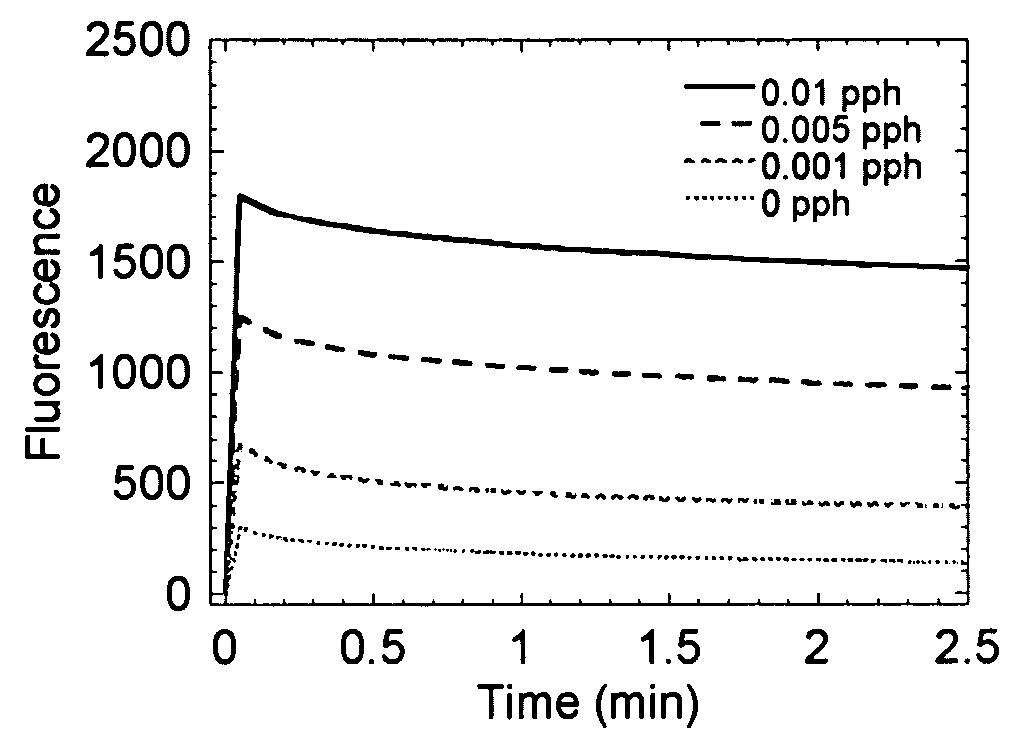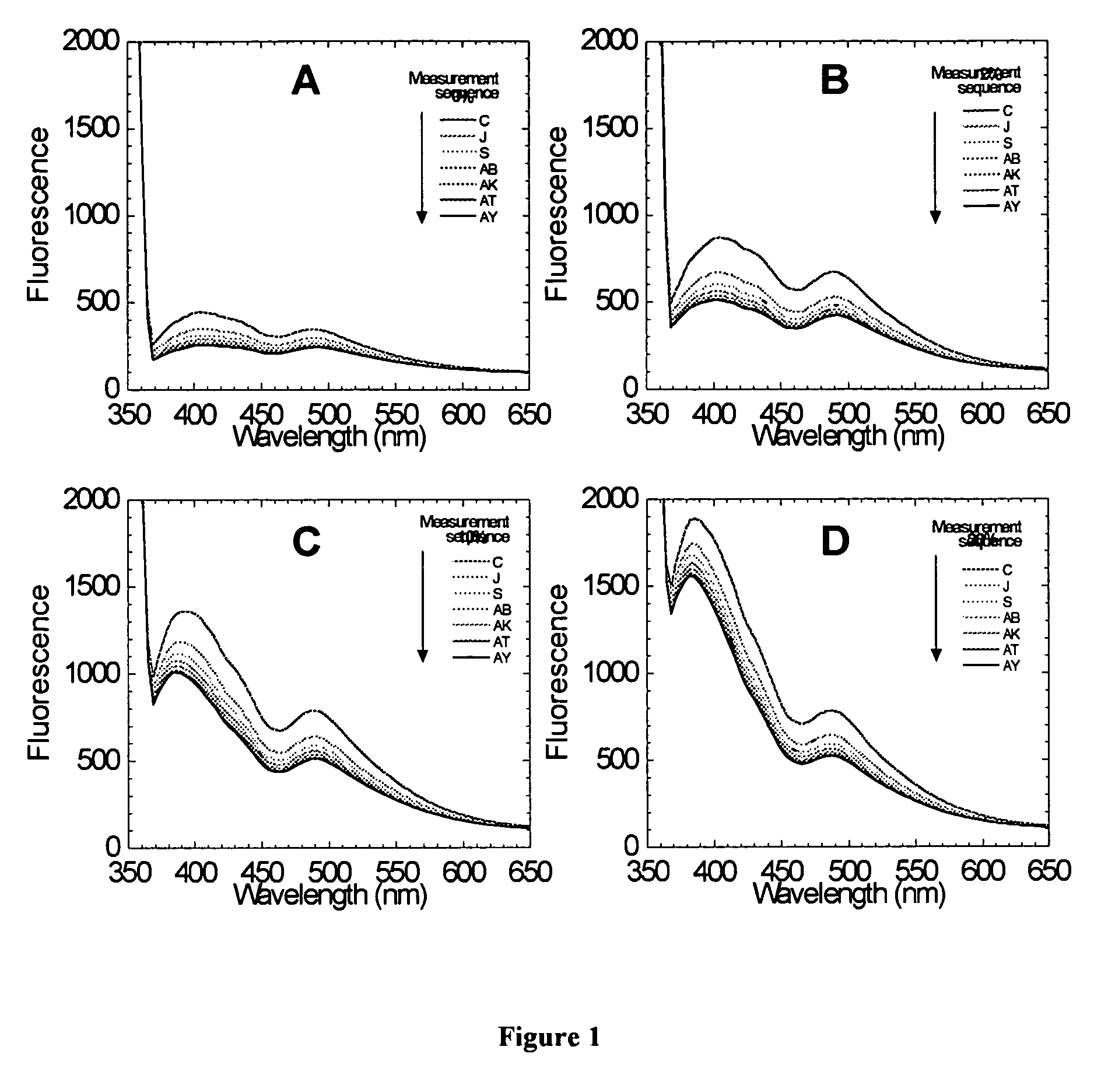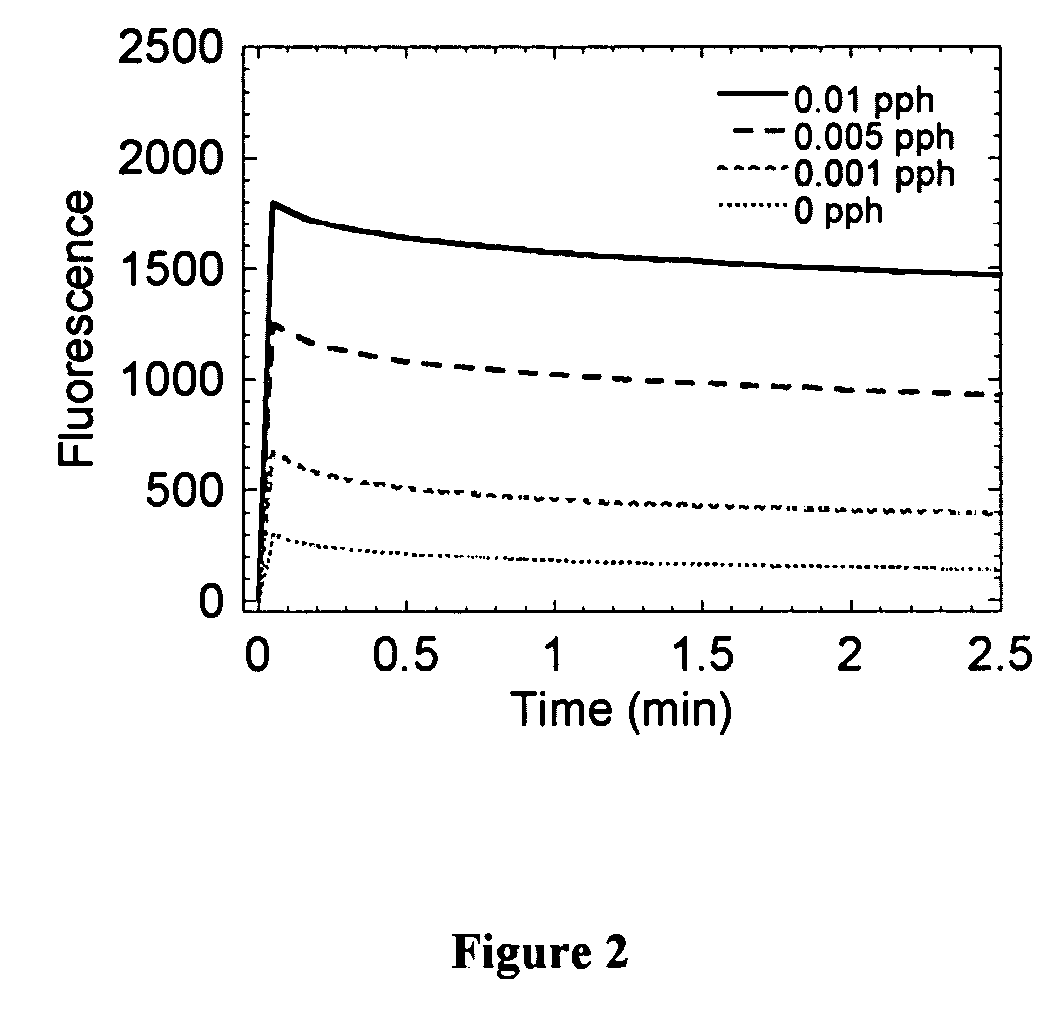Method of authenticating polymers, authenticatable polymers, methods of making authenticatable polymers and authenticatable articles, and articles made there from
a technology of authenticating polymers and polymers, applied in the field of authenticating polymers, can solve the problems of piracy of data storage media, affecting the revenue and profit of legitimate software and entertainment content providers and original electronic equipment manufacturers, and unauthorized reproduction or copying of information by unauthorized manufacturers, sellers and/or users,
- Summary
- Abstract
- Description
- Claims
- Application Information
AI Technical Summary
Problems solved by technology
Method used
Image
Examples
example 1
Preparation of Samples According to the Invention
[0107] Optically variable organic fluorophores were used as spectroscopic tags. The type and concentrations of the tags are presented in Table 1. The tags were incorporated into the substrate polycarbonate material during the molding process. Fluorescence emission spectra of the tags were measured continuously over about 2.5 min to assess the spectral signatures of the tags and the changes of these spectral signatures. Determinations were performed on a setup that included a miniature laser light source (Nanolase, France, 355 nm emission wavelength) and a portable spectrofluorometer (Ocean Optics, Inc., Dunedin, Fla., Model ST2000). The spectrofluorometer was equipped with a 200-μm slit, 600-grooves / mm grating blazed at 400 nm and covering the spectral range from 250 to 800 nm with efficiency greater than 30%, and a linear CCD-array detector. Light from the laser was focused into one of the arms of a “six-around-one” bifurcated fiber...
example 2
Experimental Results Using Tert-Butyl Phenyl Oxadiazole
[0108]FIG. 1 depicts time dependent fluorescence spectra of the fluorescent tag tert-butyl phenyl oxadiazole incorporated into polycarbonate and an OQ1030 DVD substrate used as a control. FIG. 1 illustrates two important aspects of the invention. Under a properly selected UV excitation, fluorescence of the polycarbonate and the tag exhibit time dependence. The fluorescence intensity decreases during a short measurement time (time scale=2-3 min or less). This time dependence originates from the interactions of the UV light with the polymer and the tag. This time dependent fluorescence serves as a new type of tag discrimination tool. FIG. 1 also illustrates the discrimination between a control and tag levels at 0.01, 0.005 and 0.001 pph at both the early and late stages of measurement. The simplest discrimination is by the determination of the fluorescence intensity as shown in FIG. 1.
[0109] Fluorescence intensity decreases as a...
example 3
Experimental Results Using bis(Biphenylyl)oxadiazole
[0111] Under the 355 nm excitation, the bis(Biphenylyl) oxadiazole tag has much stronger fluorescence intensity. Thus, it can be used at lower concentrations (at least 5 times less) compared to tert-butyl phenyl oxadiazole. For comparison of the fluorescence intensities, the amount of excitation light was reduced compared to the measurements with tert-butyl phenyl oxadiazole.
[0112] The time-dependent fluorescence intensity at 386 nm of samples with different levels of the tag bis(Biphenylyl) oxadiazole incorporated into polycarbonate are presented in FIG. 7. There was no significant observed change in the time-dependent behavior of the fluorescence response. Calibration curves of fluorescence intensity at 386 nm as a function of the tag concentration in polycarbonate are presented in FIG. 8. These solid and dotted curves illustrate that the fluorescence of the tagged materials does not change during the measurements. Similarly, t...
PUM
| Property | Measurement | Unit |
|---|---|---|
| wavelength | aaaaa | aaaaa |
| excitation wavelength | aaaaa | aaaaa |
| weight percent | aaaaa | aaaaa |
Abstract
Description
Claims
Application Information
 Login to View More
Login to View More - R&D
- Intellectual Property
- Life Sciences
- Materials
- Tech Scout
- Unparalleled Data Quality
- Higher Quality Content
- 60% Fewer Hallucinations
Browse by: Latest US Patents, China's latest patents, Technical Efficacy Thesaurus, Application Domain, Technology Topic, Popular Technical Reports.
© 2025 PatSnap. All rights reserved.Legal|Privacy policy|Modern Slavery Act Transparency Statement|Sitemap|About US| Contact US: help@patsnap.com



